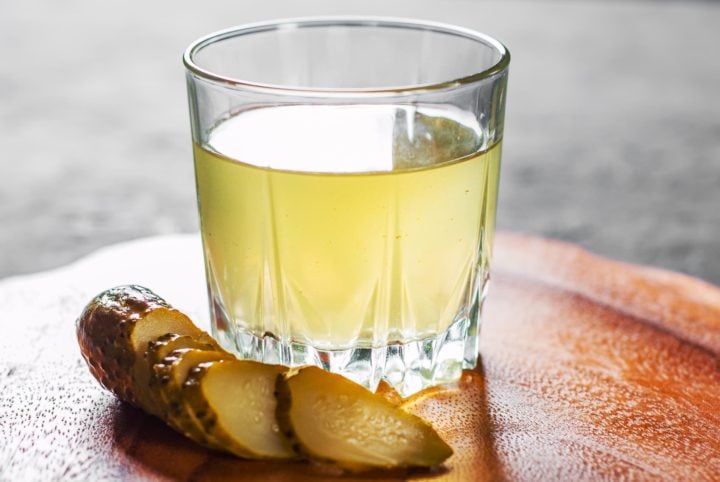
Are you aware of the fact that there is a certain fruit juice that is slowly becoming an alternative to traditional sports drinks? It is partly because it has been said that this salty fruit juice can help relieve cramps faster and also contributes to optimal body weight. Of course, there are a lot more benefits to this particular fruit juice and yes, I am talking about pickle juice!
You may not know this, but pickles have been around for thousands of years — almost 4,000 years, to be exact — dating as far back as 2030 BC, when cucumbers from their native India were pickled in the Tigris Valley. The word pickle comes from the Dutch pekel or northern German pókel, meaning “salt or brine”, two very important components in the pickling process.
Pickle juice may not be a part of your top 5 healthy juices, but just keep reading and at the end of this article, you might just want to start drinking pickle juice.
Table of Contents
The Pickling Process
Pickling — preserving foods in vinegar, brine, or a similar solution — is one of the oldest methods of food preservation. Pickles are created by immersing fresh fruits or vegetables in an acidic liquid or saltwater brine until they are no longer considered raw or vulnerable to spoilage. When we think of pickles, cucumbers commonly come to mind.
Pickled cucumbers are often lacto-fermented in saltwater brine. During this process, lactic microbial organisms develop, which turn the naturally occurring sugars of foods into lactic acid. In turn, the environment becomes acidic quickly, making it impossible for any spoiling bacteria to multiply.
Cucumber pickles can also be made with salt and vinegar brine, a popular choice for home cooks. The brine, known as pickle juice, is sometimes used by athletes to treat dehydration, though it has yet to be proven as a true remedy.
Of course, pickles aren’t limited to the dill and cucumber varieties. They can be sweet, sour, salty, hot, or all of the above. Pickles can be made with cauliflower, radishes, onions, green beans, asparagus, and a seemingly endless variety of other vegetables and fruits.
When the English arrived in the New World, they brought their method for creating sweet pickles with vinegar, sugar, and spiced syrup. Eastern Europeans introduced various forms of lacto-fermented cabbage, known as sauerkraut. The French serve tiny, spiced cornichons with heavy pâtés and pungent cheeses. In the Middle East pickles are served with every meal, from peppers to olives to lemons. Russians pickle tomatoes, among other things. The Koreans have their kimchi, while the Japanese traditionally pickle their plums and daikon, and Italians like to pickle eggplants and peppers. Each area of the world has its own beloved variety of pickles.
Nutritional Content
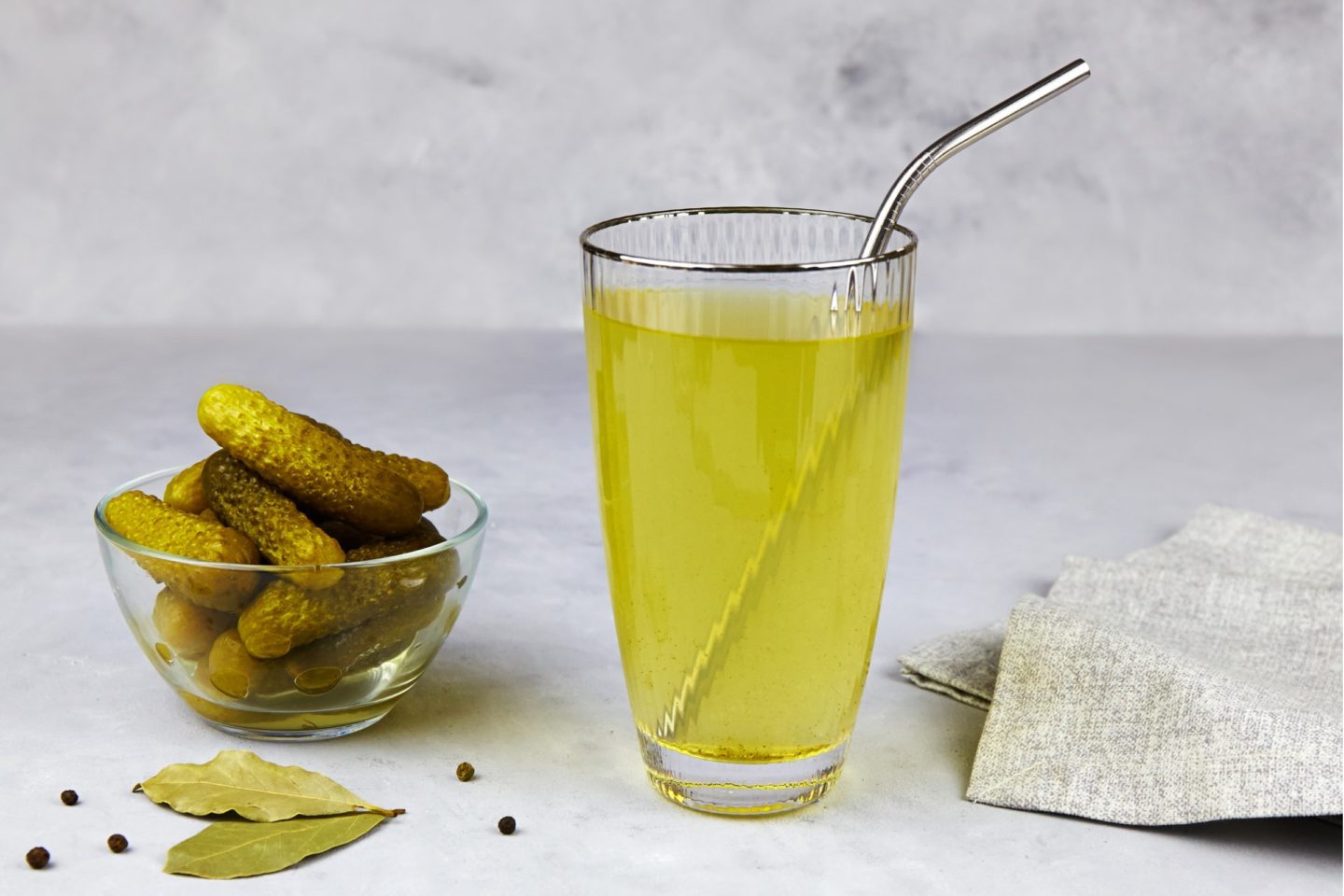
Pickles do so much more than just add that unmistakable tangy bite to your favorite sandwich. Just before we take a look at the benefits that pickle juice offers us with every sip, let us first see the nutritional content that a cup of pickle juice contains.
Take note that this is simply a generalization because it is extremely difficult to provide an accurate breakdown of this, knowing that different brands have different recipes for their pickling liquid, and pickles made at home are also made using different recipes.
Here are the estimated ranges of the nutritional content of pickle juice per serving (one cup):
- Calories: 15–200 grams
- Protein: 0–1 gram
- Fat: 0–1 gram
- Carbohydrates: 0–47 grams
- Fiber: 0–1 gram
Similarly, the vitamins and minerals present in pickle juice also depend on the recipe used in making the pickling juice. But usually, pickle juice contains the following in differing amounts:
- Sodium
- Potassium
- Calcium
- Magnesium
- Vitamin C
- Vitamin E
- Vitamin A
- Vitamin K
Twelve Benefits of Pickle Juice
Here are some pickle juice benefits that are worth mentioning. Although there are some of these that are not yet backed up by science and research, it is nice to know and apply them in cases where home remedies are needed. Who knows, they might just make you feel a lot better!
1. Keeps you hydrated and more
Water is an essential ingredient in our daily lives. We need to drink 8-12 glasses of water daily to maintain the proper functioning of our bodies. For athletes and those who love intense workouts, pickle juice is a very good option. Not only does it hydrate you, but it also provides the needed electrolytes, namely sodium, potassium, calcium, and magnesium, that are lost through your skin when you sweat.
Hydration alone can never replace the lost electrolytes during workouts. That is why you need a drink or juice that replenishes these vital electrolytes. Otherwise, you will feel a lot more fatigued.
2. Relieves muscle cramps
Here is another reason why athletes should start drinking pickle juice. According to a study published in Medicine & Science in Sports & Exercise, drinking pickle juice provided faster relief from muscle cramps compared to just drinking water. About ⅓ cup of pickle juice was needed to experience the said effect.
This could be because the vinegar in pickle juice may help with rapid pain relief. Vinegar may help stop nerve signals that result in muscle cramps, most especially your leg cramps.
3. Promotes weight loss
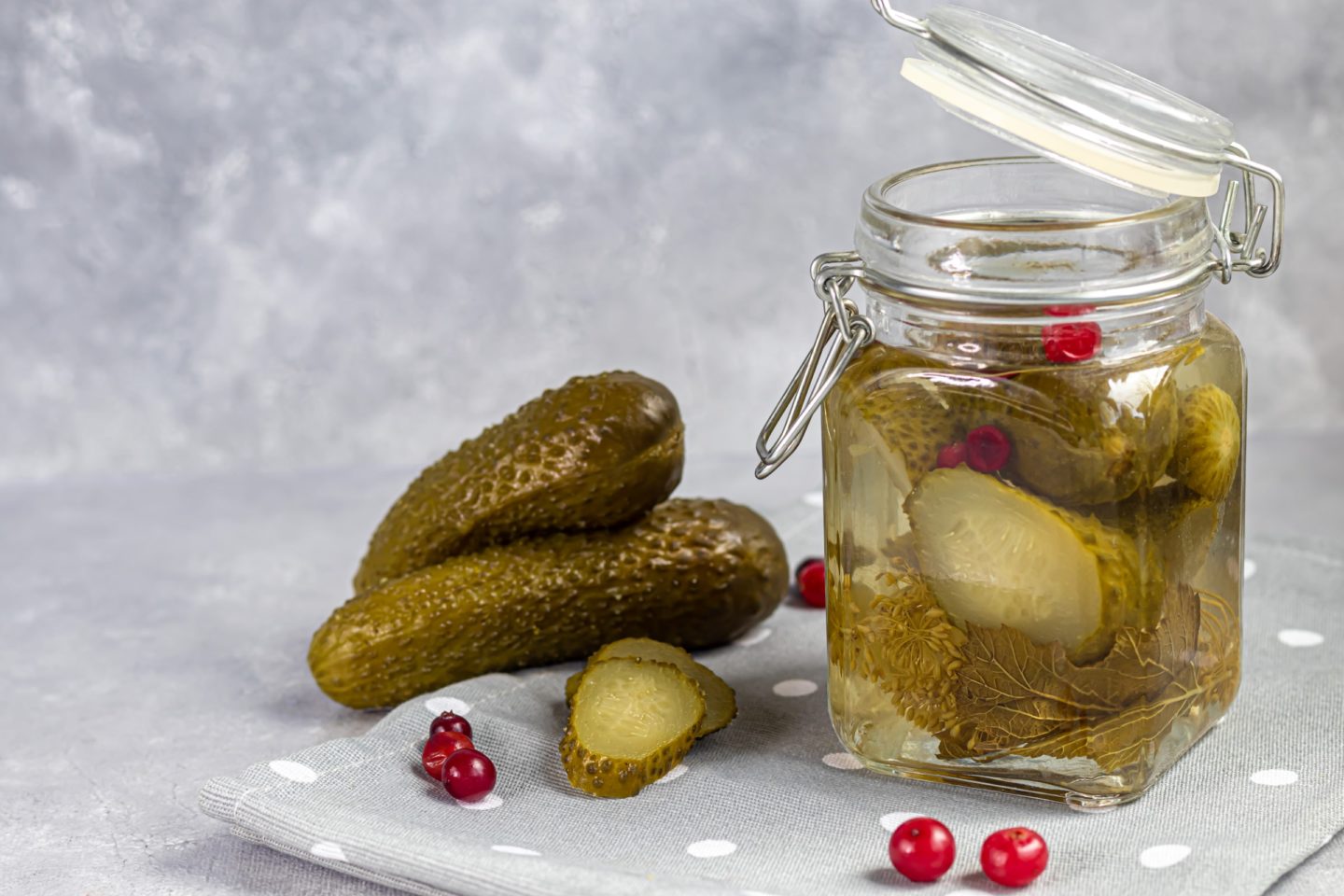
Instead of regularly buying commercial sports and energy drinks after your regular workout and not losing as much weight as you want due to the ingested sugar and calories, get yourself a glass of pickle juice. It may contain some calories depending on what’s in the pickling solution, but it definitely has no fat.
Having a drink that contains no fat is a very big bonus for those who are working out with the sole purpose of losing weight and getting rid of that extra layer of fat.
A study involving 12 people showed that vinegar, an important component of pickle juice, can increase feelings of fullness. Thus resulting in a decreased appetite and less calorie intake, leading to the weight loss that you so truly wish for or to simply maintain your optimal body weight.
4. Contains antioxidants
Two very important antioxidants are vitamins C and E and they function as protective agents of your cells and tissues against damaging molecules called free radicals. Fortunately, pickle juice contains these two key vitamins. Your body is exposed to free radicals daily, so drinking pickle juice every day adds further protection to your cells.
Vitamin C & E also aids the immune system and if ever you suffer a decreased level of these vitamins in your body, you will be prone to contracting infectious diseases. Hence, a good supply of these vitamins is needed for optimum health and well-being.
5. Helps control blood sugar levels
According to a study published in the Journal of Diabetes Research, drinking vinegar (30 mL vinegar with 6% acetic acid plus 20 mL water) before a meal helped regulate the blood sugar levels in 11 people with type II diabetes mellitus.
Blood sugar control is paramount in keeping our bodies healthy. Due to the prevalence of people affected with type II diabetes mellitus, finding ways to keep our blood sugar levels under control without having to spend lots of money paying for synthetic drugs are literal and figurative lifesavers.
Having high blood sugar levels for long periods will eventually lead to irreversible damage to various organs in the body including the kidneys, heart, and eyes. It also leads to abnormal function of the nerves that are found in your hands and feet.
This set of facts emphasize another great benefit that results from drinking pickle juice.
6. It boosts gut health
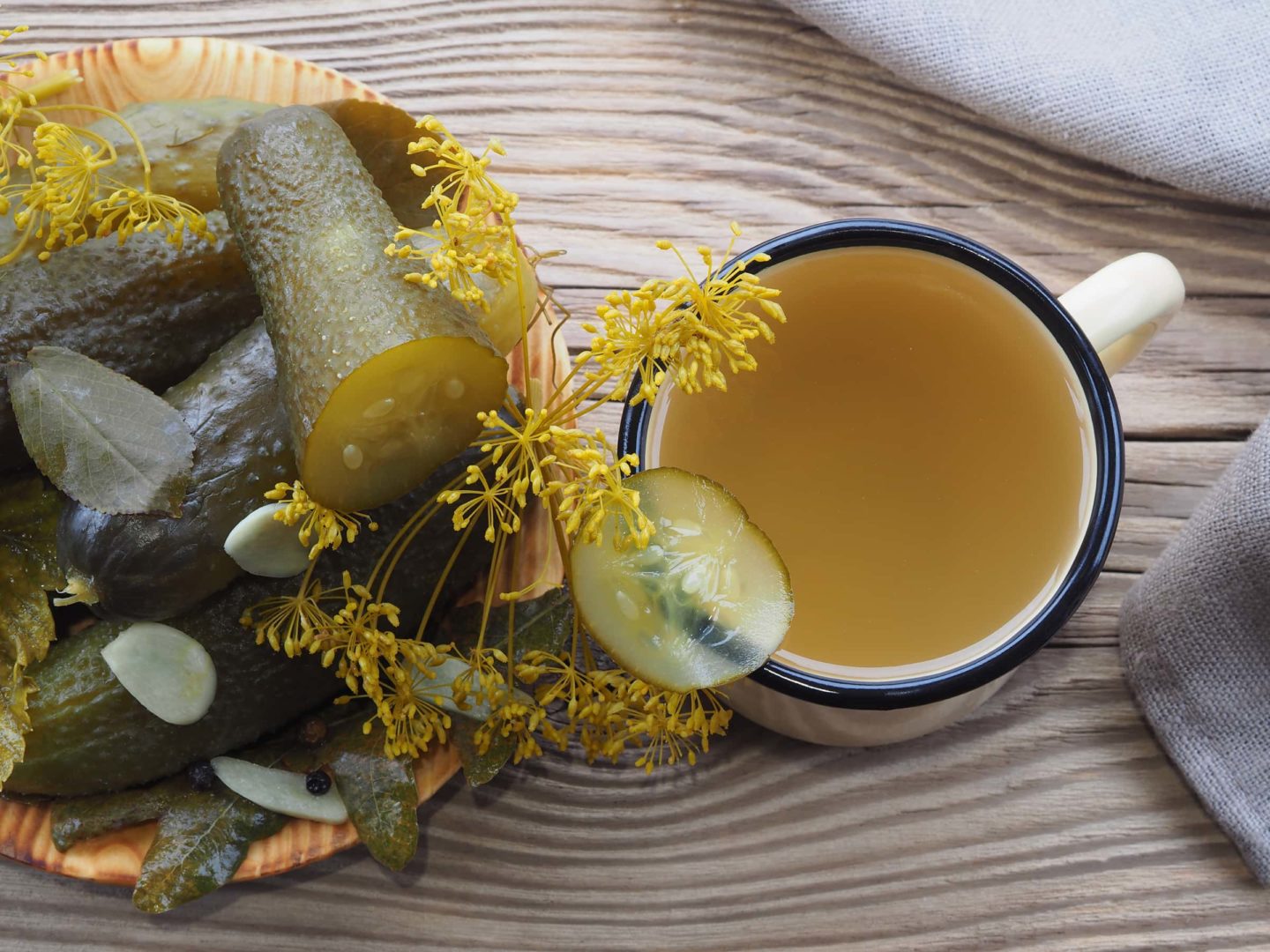
Pickles are fermented and generally, fermented foods are good for your digestive system. And this is because naturally fermented pickles juice — and their juice — contains helpful organisms called probiotics.
Your body contains both “good” and “bad” bacteria. Probiotics are called the “good” bacteria because they help keep your gut healthy. They are most commonly found in foods like yogurt, kimchi, miso, and sauerkraut.
One of the most important ways that probiotics help maintain your gut health is by balancing the “good” and “bad” bacteria so that your body will continue to function in the way it should.
However, even fermented pickles do not pack the probiotic punch that yogurt and other probiotic foods do. Plus, a person would have to drink many glasses of pickle juice per day to reach a therapeutic dose. Drinking too much at one time might result in stomach cramps.
But as long as you are free from illnesses that tend to disrupt the normal functioning of your gut, any additional supply of probiotics is always welcome.
7. Eliminates bad breath
Due to its vinegar content and the antibacterial properties that go along with vinegar, pickle juice can successfully decrease the number of those bacteria in your mouth that cause bad breath.
Although it may make your lips pucker when you taste and drink it, the benefit of having a fresher breath afterward makes it a lot more tolerable!
8. Soothes sunburns
Pickle juice is a popular home remedy for sunburns. Some people apply the juice directly to the sunburned area of the skin or soak a piece of paper in the pickle juice and lay the paper on the sunburned area.
Despite the lack of research about this particular remedy, a lot of people continue to perform this quite simple home remedy for sunburns.
9. Cures hangovers
Although the evidence for using pickle juice to relieve hangovers is purely anecdotal and not yet based on research, a lot of proponents still continue to use and promote it.
One of the reasons it is being highly promoted is because the pickle juice contains the necessary minerals needed to replenish electrolyte levels after a night of heavy drinking.
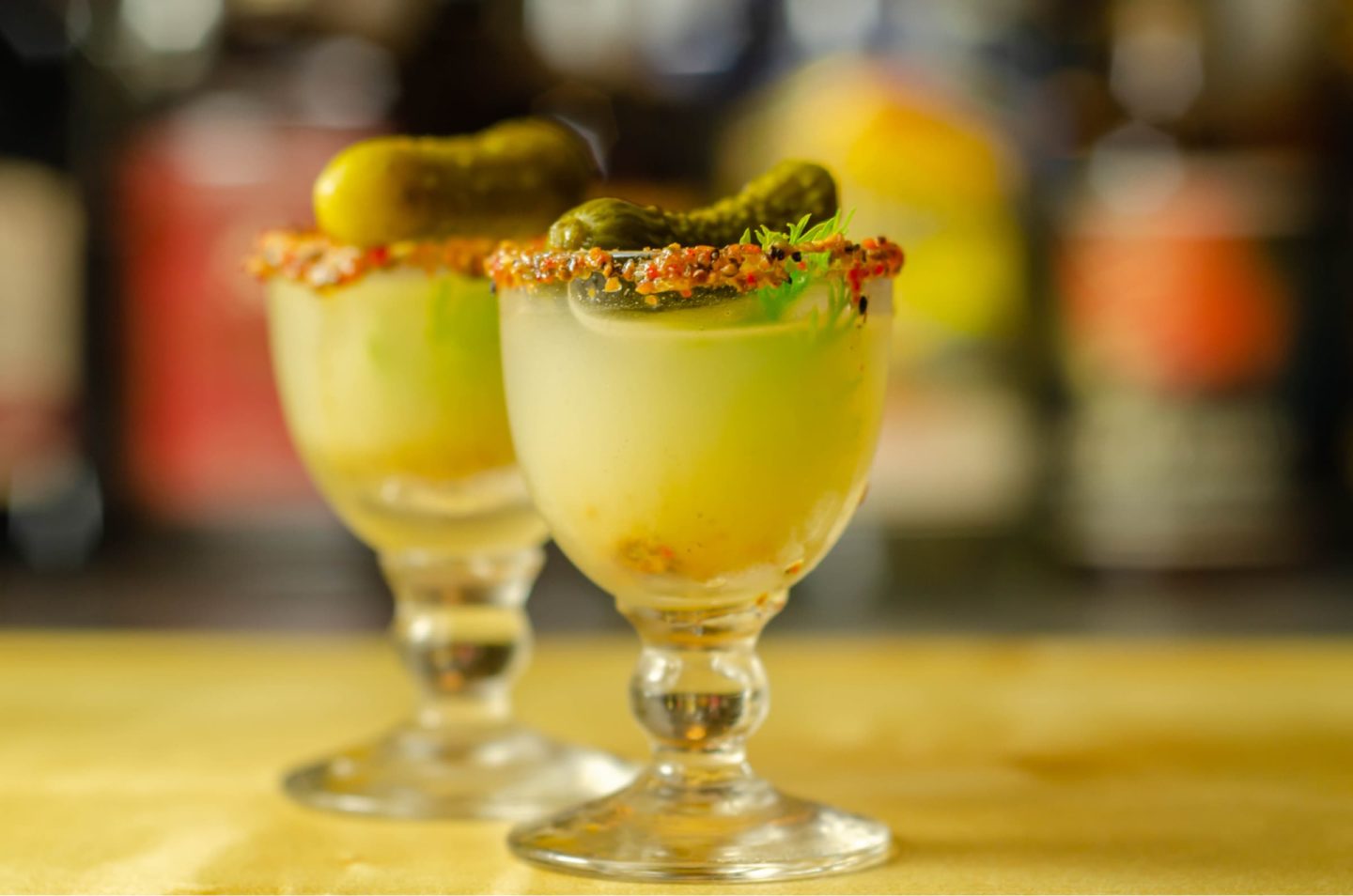
This is also because alcohol is a diuretic, which is a substance that increases urine production. As a result, this accelerates the loss of fluids and electrolytes. So, the more alcohol you drink, the more dehydrated you become, and the more electrolytes are lost through peeing, which contributes a lot to the hangover symptoms.
Even though further research and large-scale studies are really needed to evaluate how drinking pickle juice may affect electrolyte levels, dehydration, and hangover symptoms, it is still a handy home remedy to use when it is needed.
10. Relieves a Sore Throat
Some people use pickle juice as a home remedy for a sore throat or even a dry throat. Just simply gargle it like you would any ordinary mouthwash.
The vinegar or apple cider vinegar content of the pickle juice might be responsible for the relief experienced.
11. Relieves Menstrual Cramps
Although no research has specifically studied this, the mechanism may also be the same in relieving muscle cramps.
The very high level of sodium in pickle juice may also help reduce any cravings for salty foods, which some people experience before or during their periods.
12. Lowers Cholesterol
This particular benefit is specific to dill pickle juice. Dill contains the substance quercetin, which according to some studies has cholesterol-lowering properties.
A study published in the journal Cholesterol found that dill lowered cholesterol in hamsters. This same effect might also occur in humans.
Dill pickle juice has even more benefits than pickle juices that contain no dill.
Pickled vs Fermented: What’s the Difference?
We’ve already discussed the pickle juice benefits, but before going any further, let us try to understand and differentiate these two words which are very relevant in our discussion. Do they mean the same thing? Or are they referring to different processes? One important thing to note is that not all pickles are fermented.
Here’s an amazing discussion from Naturally Fermented Pickles: The Complete Guide by Holly Howe:
Pickled Food
Food that is pickled has been preserved in an acidic medium, most often vinegar. The vinegar guarantees a sour flavor and acts as a preservative. Using vinegar prevents natural fermentation from occurring and results in foods that offer no probiotic benefits.
During the canning process, you thoroughly sterilize everything, effectively killing dangerous bacteria like C. botulinum but also friendly lactic-acid bacteria and other helpful microbes.
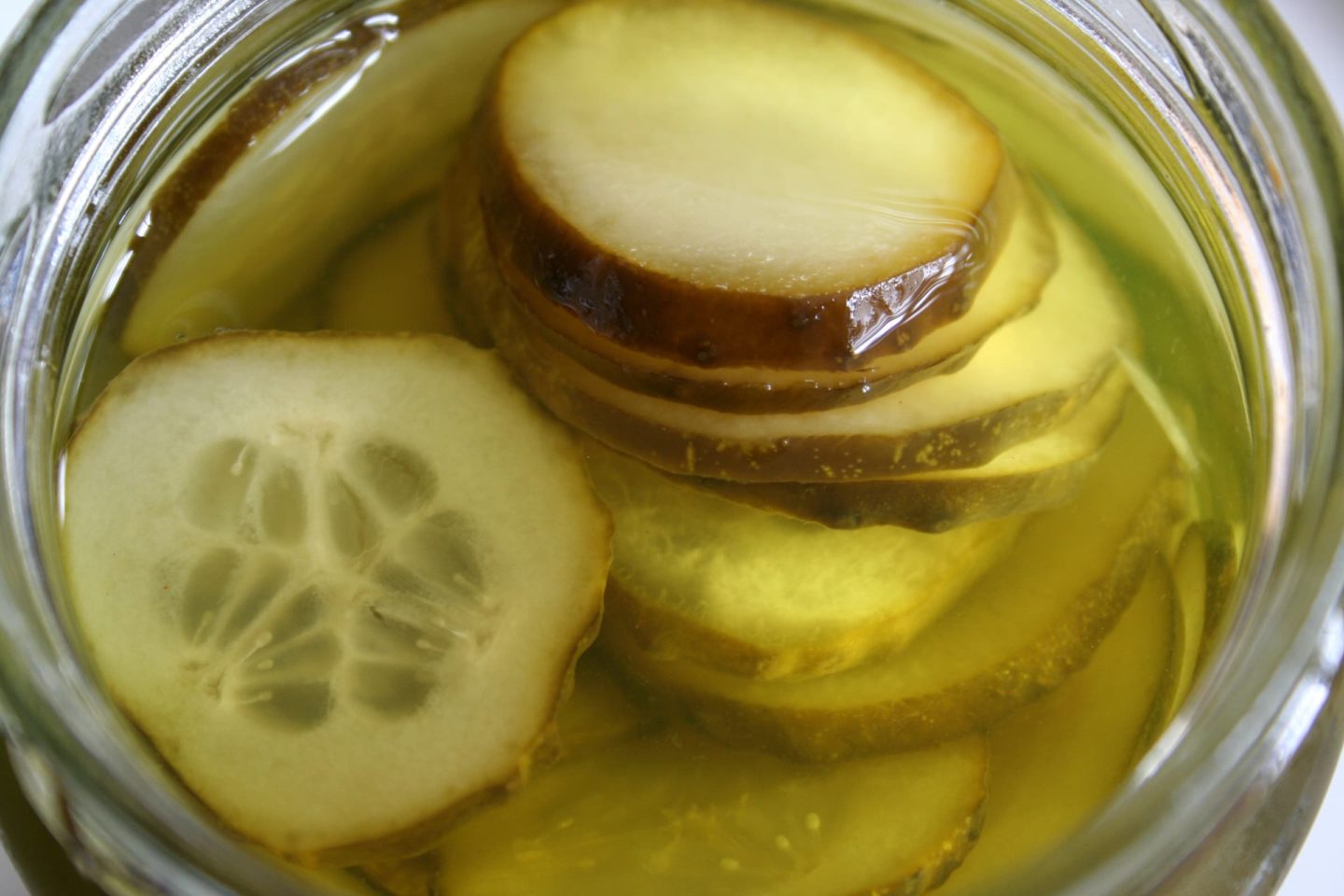
Fermented Food
Food that you ferment in your own kitchen using just salt and water creates their own preservative, lactic acid, as a byproduct of the fermentation process. During fermentation, the starches and sugars in the food are converted into lactic acid by the bacteria lactobacilli.
Lactic acid production is what gives fermented foods their unique sour smell and flavor along with making them super nutritious and incredibly beneficial for digestion.
Making Fermented Pickles at Home
To have pickle juice or the brine, we need to make pickles first. Here is an awesome recipe by Meghan Telpner from the Academy of Culinary Nutrition on how to make fermented pickles. Let’s begin!
Step 1
Gather your ingredients together. For a one-liter Mason jar’s worth of pickles, you’ll need:
- About 8-12 small cucumbers
- 3-5 cloves of garlic (depending on how garlicky you like them)
- ¼ cup – ½ cup fresh dill (or 2 tbsp dried dill seeds)
- 2 Tbsp sea salt 1 clean Mason jar
- About two cups of non-fluoridated water
Step 2
- Drop your cloves of garlic and dill into the jar.
- Add your cucumbers. I recommend stacking the bottom layer of cucumbers and then placing a few cukes horizontally to wedge them in. This will help keep the cucumbers submerged for optimal lactic acid fermentation.
- Add water until you reach the part of the jar that starts to taper in. Make sure all the jars are covered.
Step 3
- Pour the water from the jar into a measuring cup. For every 1 cup of water, add ½ to 1 tbsp of sea salt (I use about ¾ of a tbsp per cup of water – you may want less or more depending on how salty you like things).
- Stir the salt into the water until dissolved and then pour it back into the jar of cucumbers.
Step 4
- Seal the jar and set it on the counter covered or in a cupboard that is not too hot and not too cold. Ensure that the cucumbers stay submerged in the brine. Otherwise, mold may develop. If they keep popping up, place a rolled leaf of cabbage or a weight on top to keep them under the brine.
- Let it sit for 3 days and then transfer it to your fridge. Open when you’re ready. Use a clean fork or spoon to grab the veggies (no double-dipping).
Fermenting Other Types of Veggies
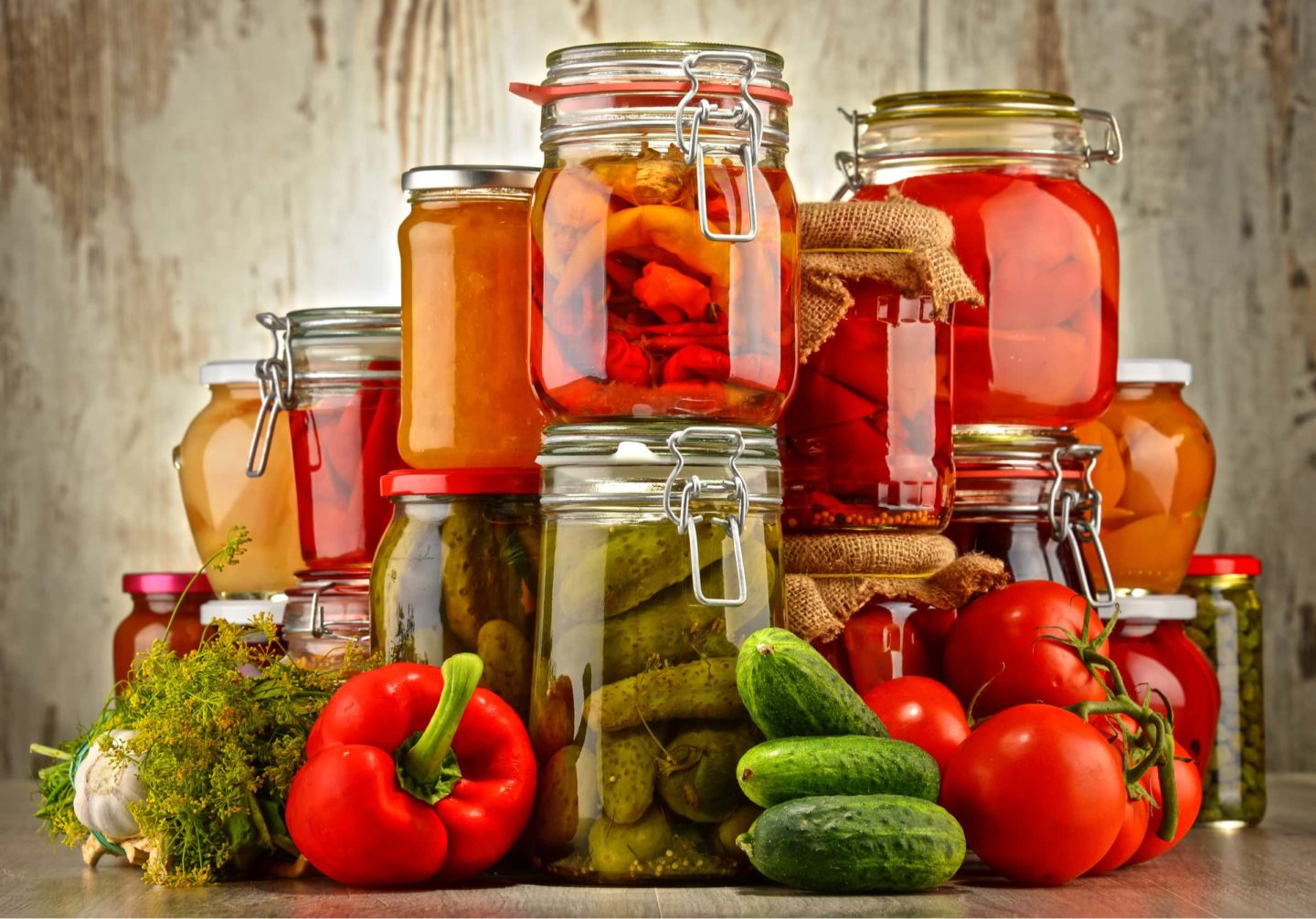
If you are fermenting other types of veggies, like beans or carrots, they may need more time. I recommend leaving them on your counter with the lid on gently, not sealed, or covered with a cloth to keep bugs and dust out.
Taste after 3 days, 4 days, 5 days, etc. until they are the taste and consistency you like best. Then transfer to the fridge. You may need to skim a little scum off the top. If you ever see fuzz or bugs, that’s a bad thing and best to discard. When in doubt, throw it out!
The fermented pickle juice that we can gain from making fermented pickles contains all the benefits discussed above, and it surely packs a punch as a fruit juice where nutrition is concerned.
One important thing to point out is that some people prefer to add calcium chloride as a firming agent in pickling, which maintains the crispness. But it isn’t necessary, and it all boils down to personal preference.
In some situations, you might not want to wait for as long as 3 days for your pickle juice. Or, you may not like the taste and feel uncomfortable drinking it. Fret not, for we also have some recipes for “instant” pickle juices!
Do note, however, that these recipes don’t go through a fermentation phase. Therefore, the nutritional benefits aren’t the same as those of pickle juices that underwent fermentation. Nevertheless, it still is a nutritious fruit drink that can easily be made in your kitchen.
How to Use Your Leftover Pickle Juice
When you’ve consumed all your pickles and all that’s left is the liquid or the pickle juice that you don’t want to drink anymore, just simply throwing it out would be such a waste. Here are 5 uses for your leftover pickle juice:
- It can be added to a salad dressing.
- It can be added to barbecue sauces.
- It can be an ingredient in steamed veggies.
- It can be used as a weed killer (due to its vinegar content).
- It can be used as an alternative to strong acids like vinegar and citric juice.
Pickle Juice Recipes
Like what was discussed previously, fermenting your own pickles and making pickle brine is easy. All you need are veggies, clean water, and salt, plus any herbs you love, along with a jar to hold it all.
If you’re not interested in making your own pickled vegetables or pickle brine, store-bought is an option. Ensure that you purchase lacto-fermented pickles, which will be in the refrigerator section of the grocery store or health food store (the pickles in jars or cans in the aisles will be vinegar pickles and not fermented).
Check labels, where you should see only vegetables, salt, and herbs used.
Yes, pickle juice is available in most markets nowadays, but if you want to try making your own pickle juice at home, here are two recipes that you can try:
Instant Pickle Juice Recipe
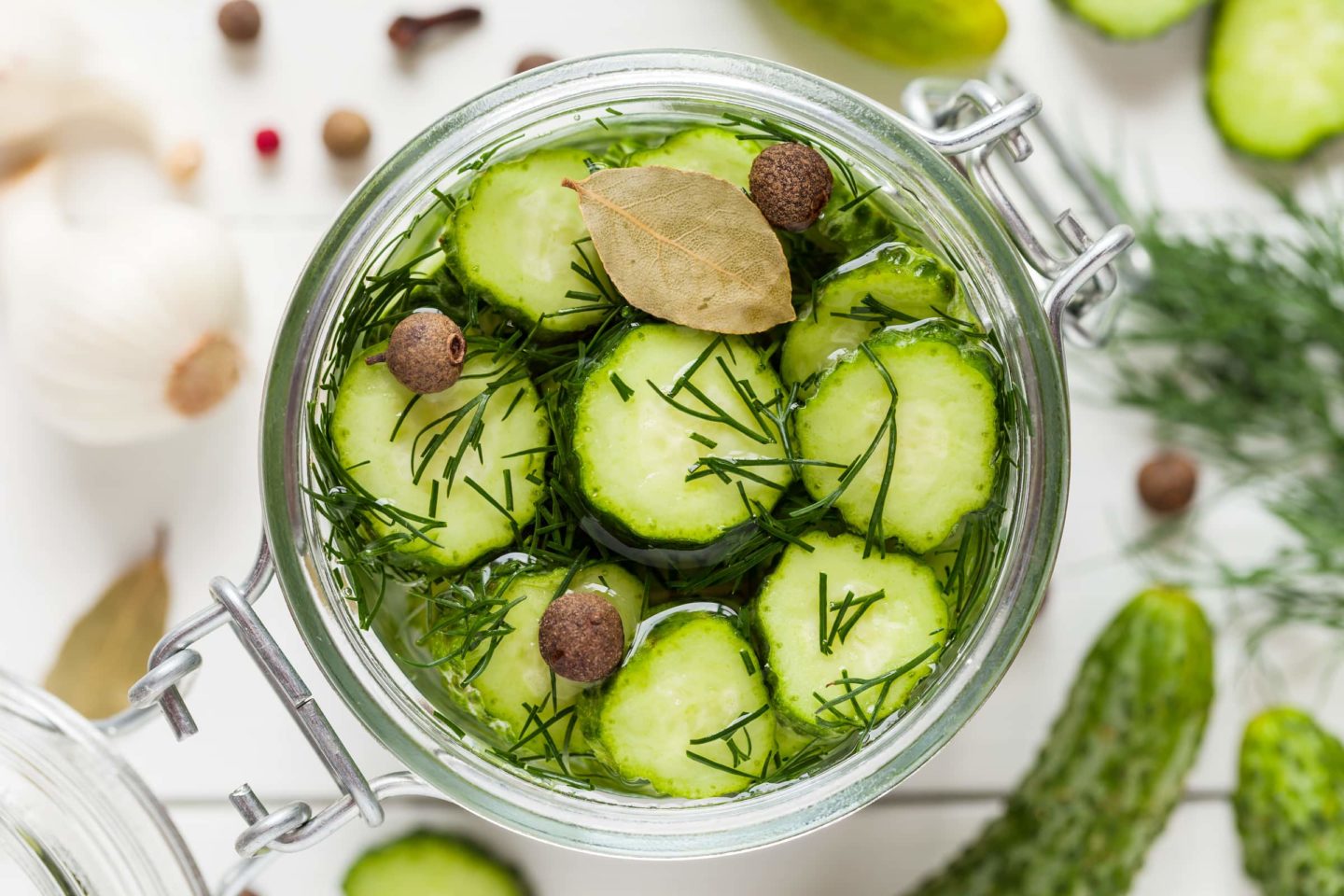
Essential Ingredients:
- 1 cup water (filtered)
- ½ cup white vinegar (or rice wine vinegar)
- 2 tbsp kosher salt (or Himalayan pink salt)
Optional spice ingredients:
- 1 tsp dill
- 1 tsp ginger (fresh, peeled, and chopped)
- 1 tsp mustard seeds
- 1 tsp black pepper (powder or peppercorns)
- ½ piece jalapeno (seeded and chopped)
- 1 whole garlic cloves
- 1 tsp red pepper (flakes)
Instructions:
- Take a large pot and add water, white vinegar, and salt to it.
- Heat the pot and bring the mixture to a simmer.
- Add any or all of the optional pickling spice ingredients to the pot and simmer for another few minutes until all the flavors blend into the mixture.
- Turn off the gas and let the mixture cool.
- Now strain the mixture into a quint jar or a bottle using a fine mesh or a strainer.
- Your pickle juice is ready to use.
Notes:
- The given list is just a list of all the commonly used pickling spices. Feel free to use any pickling spice as per your convenience and availability.
- Homemade pickle juice can be stored in the refrigerator for up to one month.
- Gently shake the container before every use. It helps to redistribute the herbs and spices.
Recipe Source: Amazing Homemade Pickle Juice Recipe
Homemade Pickle Juice Recipe
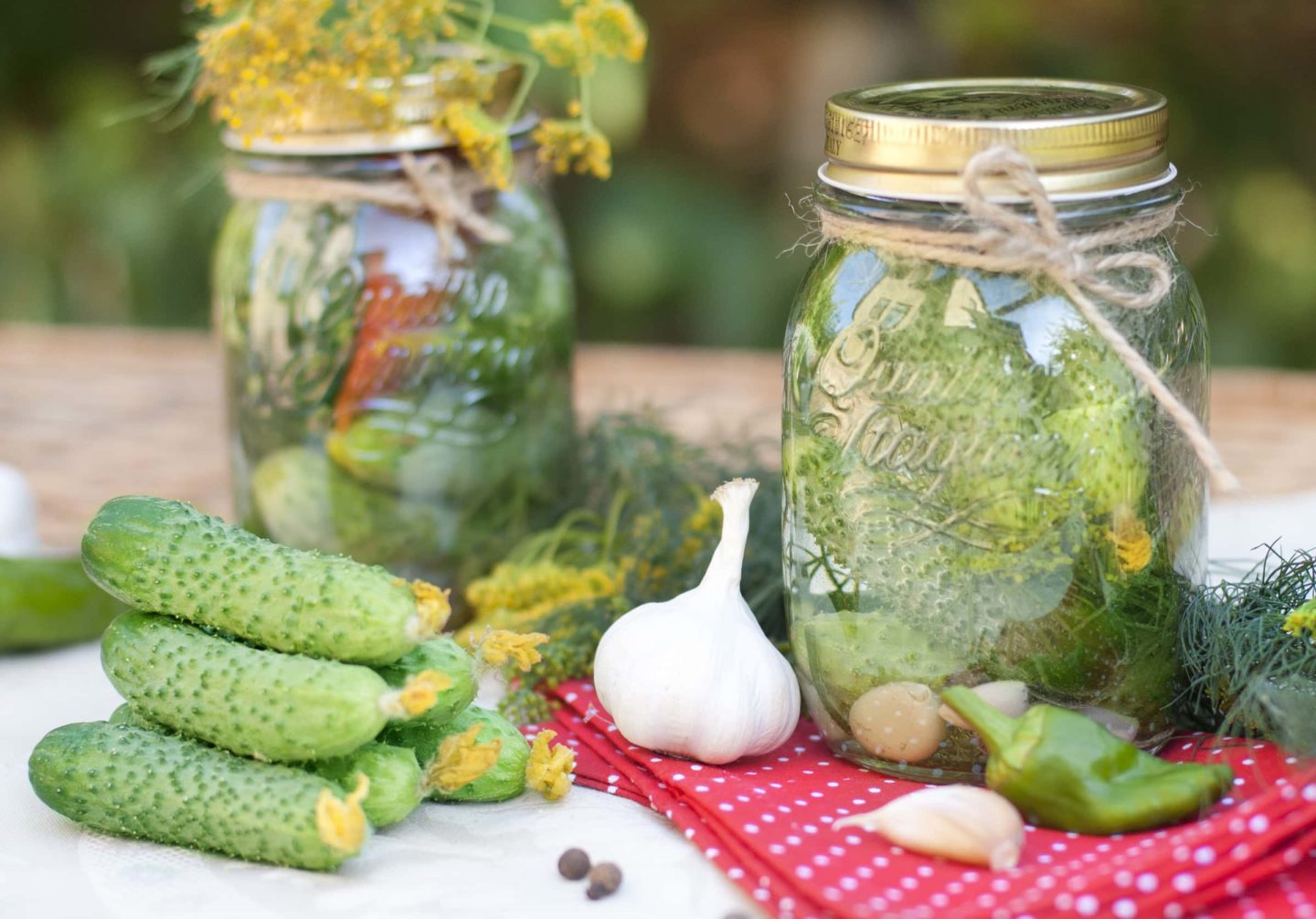
Essential Ingredients:
- 2 cups purified/filtered water
- 1 cup white vinegar (5% acetic acid)
- 2 tbsp kosher salt
- 1 tbsp pickling spice
Optional Ingredients:
- Dash of sugar
- Fresh dill sprigs (4) or ½ tsp dried dill weed
- Clove of garlic (partially crushed)
Directions:
- Mix all ingredients in a saucepan, on low to medium heat, stirring constantly to dissolve all salt and sugar.
- Pickling spice can be added to the pan or in the container. It can be added loose or within a tea ball (for those who like clear pickle juice).
- Let cool, pour into a container, and store in the refrigerator.
- Gently shake once each day to redistribute herbs and spices, if pickling spices are used.
- If the resulting mixture is too vinegar-heavy, add more filtered water. Drink 1-4 ounces per day.
- If you start to cramp, take a swig and swallow. 1 oz = a single shot. Based on my experience, muscle cramping disappears within 30-90 seconds.
Notes:
- A basic pickle brine will include 1 or 2 parts water to 1 part vinegar (the stronger, the faster it will pickle), and about 1 tablespoon of salt per cup of water.
- To that, you can add any spices you want. The easiest solution would be to pick up a jar of pickling spices at the grocery store. Add about 1 tablespoon pickling spice per cup of brine.
Recipe Source: Homemade Pickle Juice
Precautions
1. Hypertension
For those persons who need to strictly monitor their sodium levels due to existing medical conditions like hypertension, chronic kidney disease, or others, you might want to consult your physician or dietician to see if you can safely drink pickle juice.
Pickle juice, depending on the formulation and the ingredients, contains a moderate amount of sodium, which can be detrimental for those who need to be on a low-sodium diet.
Even for those who are just trying out pickle juice for the first time, you can start with small amounts at first, then increase it slowly to what is tolerable by your body. The recommended daily sodium intake is less than 2,300 mg. With regards to those pickle juices sold in the market, depending on the brand, 3 ounces of pickle juice can give you 900 mg of sodium.
Too much sodium in the body can result in water retention, which further leads to increased blood pressure, so practice moderation in drinking pickle juice.
2. Stomach Ulcers
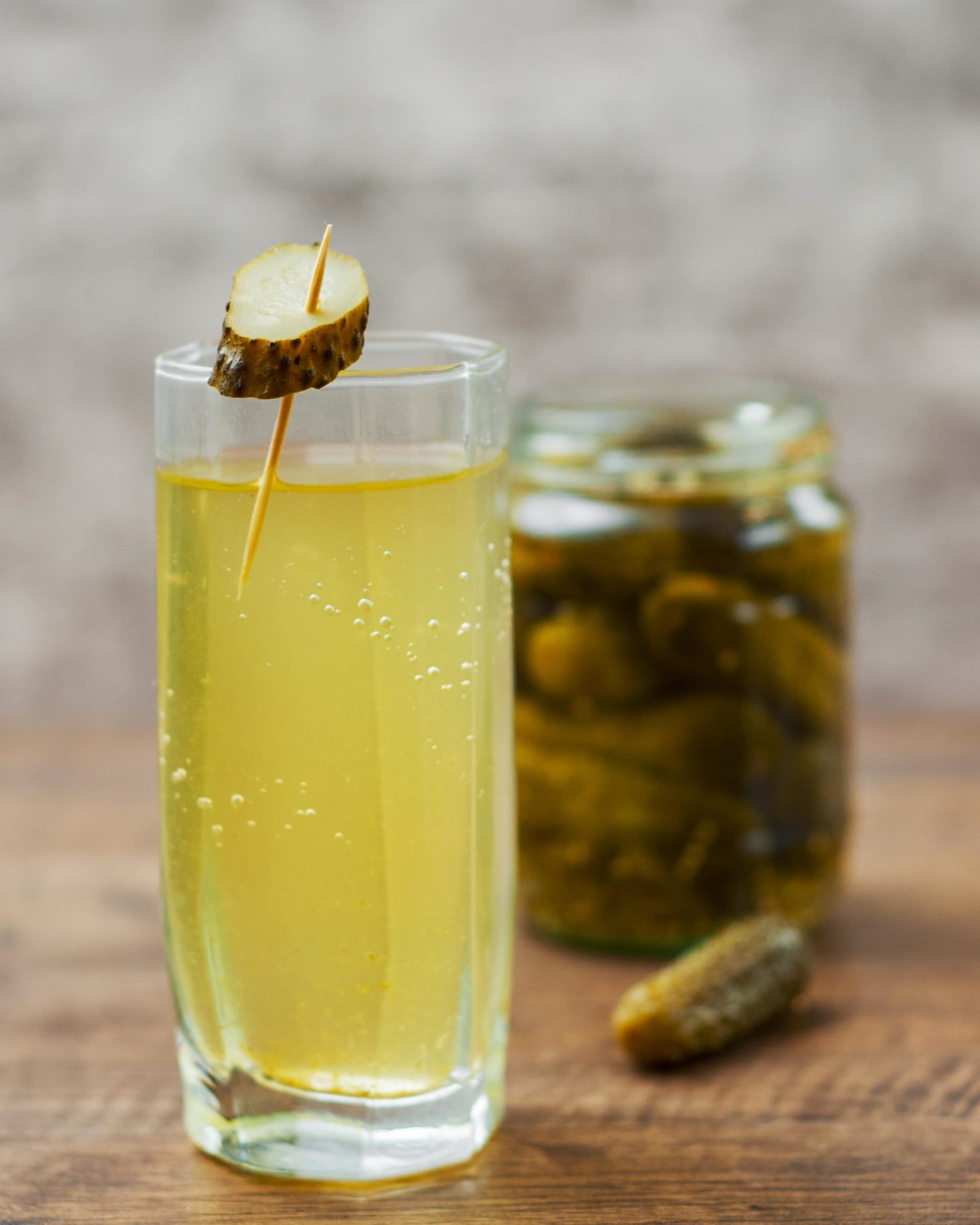
Keep in mind that for those persons who have no stomach ulcers, ingesting acidic foods won’t result in stomach ulcers, although it may increase the risk to a certain extent.
But for those who already have existing stomach ulcers, drinking pickle juice might cause pain and abdominal discomfort. As a result, people with such conditions are generally advised not to take any acidic foods or juices. And sadly, that includes pickle juice.
3. Diarrhea
Drinking too much pickle juice at one time might lead to an upset stomach, which will result in stomach pain, stomach cramps, bloating, and even diarrhea. Make sure to only take small amounts at a time to test how much your body can tolerate. As always, moderation is needed.
Takeaway
Pickle juice is indeed a one-of-a-kind fruit juice. It can either be easily and instantly made or properly prepared with a waiting time of at least 3 days to get the full benefits of it. It offers a lot of benefits that can be very helpful in maintaining optimal health.
One benefit worth mentioning is the idea that it can be easily used as an alternative to commercial sports drinks and that it costs a whole lot less.
At the end of the day, all good things have their downsides and pickle juice is no exception. Be sure to take it in moderation and always remember that its sodium content is one thing to watch out for.

Leave a Reply